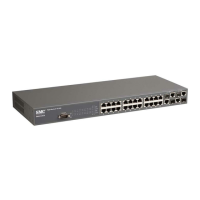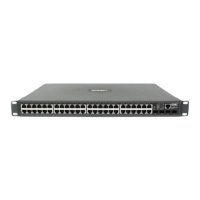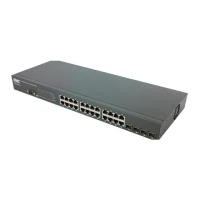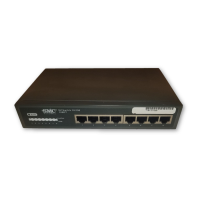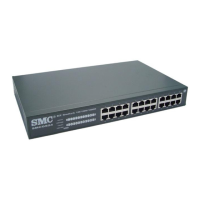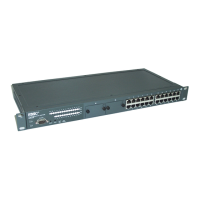L
INK
A
GGREGATION
C
OMMANDS
4-175
Link Aggregation Commands
Ports can be statically grouped into an aggregate link (i.e., trunk) to
increase the bandwidth of a network connection or to ensure fault
recovery. Or you can use the Link Aggregation Control Protocol (LACP)
to automatically negotiate a trunk link between this switch and another
network device. For static trunks, the switches have to comply with the
Cisco EtherChannel standard. For dynamic trunks, the switches have to
comply with LACP. This switch supports up to four trunks. For example, a
trunk consisting of two 1000 Mbps ports can support an aggregate
bandwidth of 4 Gbps when operating at full duplex.
Link Aggregation Commands
Command Function Mode Page
Manual Configuration Commands
interface
port-channel
Configures a trunk and enters
interface configuration mode for the
trunk
GC 4-156
channel-group Adds a port to a trunk IC (Ethernet) 4-176
Dynamic Configuration Command
lacp Configures LACP for the current
interface
IC (Ethernet) 4-177
lacp
system-priority
Configures a port's LACP system
priority
IC (Ethernet) 4-179
lacp admin-key Configures a port's administration
key
IC (Ethernet) 4-180
lacp admin-key Configures an port channel’s
administration key
IC (Port
Channel)
4-181
lacp port-priority Configures a port's LACP port
priority
IC (Ethernet) 4-181
Trunk Status Display Command
show interfaces
status port-channel
Shows trunk information NE, PE 4-165
show lacp Shows LACP information PE 4-182
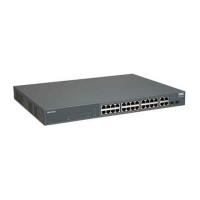
